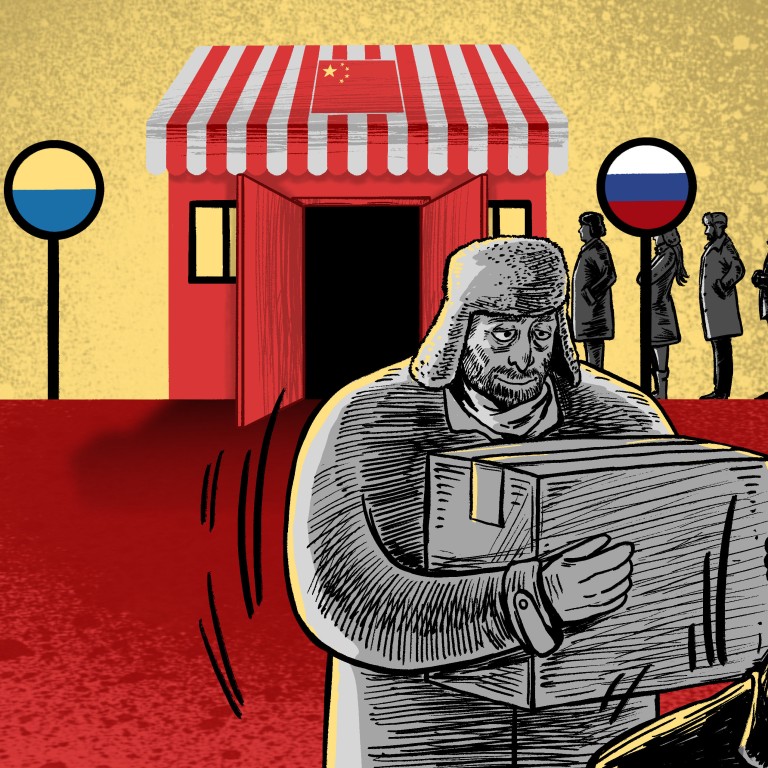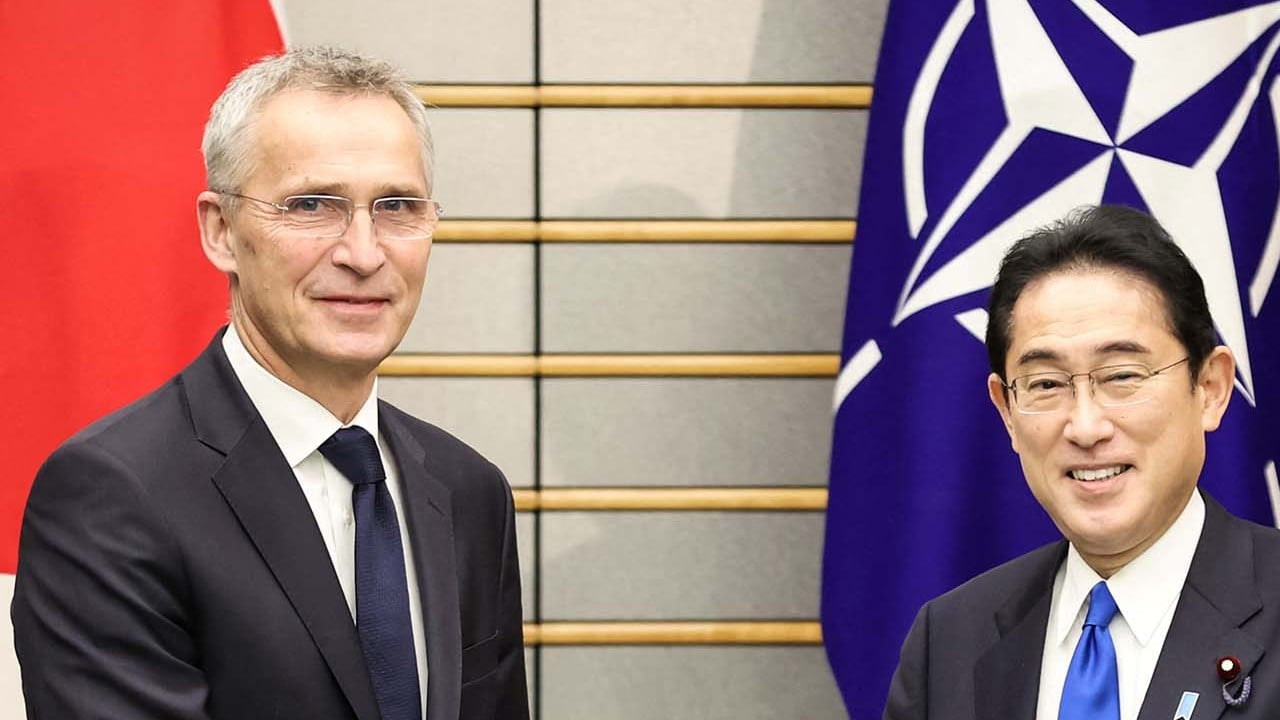
Ukraine war, 1 year on: for Chinese businesses, perils and pitfalls as supply chains have changed
- A large business void in Russia, caused by Western brands shunning the country, makes the market as appealing as ever for Chinese sellers
- But some firms are finding new challenges to making inroads with both Russian and Ukrainian buyers, including fierce competition from other countries
Rick Wang knows it can get pretty cold in Russia. So, the sales manager for a down-jacket manufacturer in the eastern Chinese province of Zhejiang had high hopes when he paid a one-week visit to his Russian clients after the recent Lunar New Year holiday, looking to sell some coats.
But the trip earlier this month didn’t yield the results he was hoping for. He did get some face time with five current clients, and he met with two potential ones, but no one placed any new orders.
Instead, he said, many Russian firms have been increasingly sourcing goods from his Vietnamese competitors.
“We came a bit late, as big orders had been taken away by Vietnam so we could only take smaller ones,” he said. “We want big orders, while clients ask for lower prices.”
Back in 2014, when Russia invaded and annexed Crimea from Ukraine, Wang’s business began shifting to Italy, leaving Russia to account for only a small share of his international market.
‘Can’t afford to fail’: China vows modern socialism will reach rural masses
But the winds have changed in the 12 months since Russia turned its troops on Ukraine itself. A large business void in Russia, caused by Western brands shunning the country, makes the market as appealing as ever for Chinese sellers such as Wang, particularly amid otherwise weak global export prospects.
However, some are finding that it is not as easy to make business inroads with their northern neighbour as it once was.
“Vietnamese products have become more competitive due to lower tariffs and labour costs than Chinese,” Wang explained. “What makes the situation even worse is that Russian clients are looking for cheaper products due to their bleak economic outlook and shrinking middle class in the country.”
A year into the Ukraine war, Chinese companies are assessing their gains and losses in the Russian and Ukrainian markets. Wary of the Western sanctions, some big Chinese firms have pulled out of Russia, while smaller ones are leveraging their bets as the Kremlin increasingly turns to friendly countries.
The Russian government’s procurement policy is bound to favour Chinese companies in bidding
William Liu, the marketing manager for a Guangdong-based medical device exporter, said the sector saw “considerable” growth last year, and some medical companies have doubled their sales to Russia.
Last year, Russia imported US$404.39 million worth of Chinese instruments and appliances used for medical, surgical, dental or veterinary purposes, marking a year-on-year increase of more than 50.2 per cent, according to official Chinese data.
Liu, who is in charge of marketing to parts of Russia and South America, expects orders from the Eurasian region this year to at least match those seen last year, even though procurement budgets for Russia’s public medical institutions might be squeezed due to more expected military expenditures.
“The Russian government’s procurement policy is bound to favour Chinese companies in bidding. And a large number of end-product demand is shifting from the West to China for procurement,” he said. “After all, with a population of nearly 150 million, Russia has a huge and fixed demand for various products.”
Why China won’t be a mediator in Ukraine conflict any time soon
But Chinese companies are currently unable to compete for the market share of Russia’s high-end medical devices, as it is still firmly in the hands of Western companies, he added.
According to the Federal Customs Service of Russia, the country’s top-five trading partners in 2022 were China, Turkey, the Netherlands, Germany and Belarus.
China’s trade with Russia saw the biggest rise among all of its major trade partners. Overall trade last year rose by 29.3 per cent to US$190.3 billion, up from 2021’s US$147 billion dollars and 2018’s US$108 billion, with Chinese imports rising by 43.4 per cent and exports up by 12.8 per cent, according to Chinese customs figures.
Energy trade is the ballast stone for bilateral trade. Russia has been China’s biggest energy supplier and the second-biggest exporter of crude oil to Beijing. China’s overall imports of crude oil fell in 2022, but China imported more from Russia.
China and Russia agreed in 2019 to double trade to US$200 billion by 2024, as each had its own troubles with the United States.
And it is very likely that the goal could be achieved earlier this year, according to Gong Jiong, an economics professor at the University of International Business and Economics in Beijing.
“The Ukraine war has influenced Sino-Russian trade significantly. If the war continues, bilateral trade is expected to continue to be bolstered,” he said, given that the war has increased Russia’s reliance on Chinese products.
Chinese investors will be interested in scooping up the projects that Western companies have previously took part in, and there may be more direct mutual investment, Gong said.
Chinese investments have exceeded US$50 billion in the past 20 years, including the Arctic LNG-2 and Dongfang Petroleum projects, as well as mutual participation in multiple IPOs, including on the St. Petersburg Stock Exchange, according to Sputnik News.
Will China’s investment in Russia’s Far East help offset Western sanctions?
Russia’s policy in its Far East region has also attracted Chinese funds, Gong added.
Anna Kireeva, a research fellow at the Moscow State Institute of International Relations, said China’s economy opening up this year will give a further boost to Russian exports to China, including petroleum and other oil-refined products.
“However, this increase is going to be limited by the transport capacity of the Trans-Siberian railway and logistical bottlenecks in the Far East,” Kireeva said.
As for trade within Ukraine, some Chinese firms are finding the outlook even less rosy than it is with Russia.
Liu said his company has continued to receive orders from Ukraine, but they have sharply declined from pre-war years.
Russia has no other option but to diversify both its imports and exports to other friendlier markets
“We have lost contact with Ukrainian customers,” said Steve Xie, a Zhejiang-based fabric exporter. “It was also difficult to get payments from Russian clients in the early days of the war, but we have managed to get back to normal quickly.
“Payments are faster and more convenient, as we are now settling in the yuan. And clients need more products than before.
“Apart from fabrics, one of our Russian clients has also placed orders for fruits, vegetables and canned meat. We said, ‘why not’, and delivered the products through border ports.”
Kireeva said Russia’s imports from China are expected to increase, including consumer goods; electronics; automobiles and automobile parts; equipment and machinery.
“With no end to the Ukraine conflict in sight, and more and more sanctions coming from the EU that ban or impose price caps on new categories of goods, Russia has no other option but to diversify both its imports and exports to other friendlier markets. With the size of its economy and geographic proximity, China is the most favourable option for Russia,” she added.
Top Chinese diplomat and Macron discuss Ukraine war during meeting in Paris
China’s automobile industry is going to be a major beneficiary of these trends, with a huge amount of unsatisfied demand in the Russian market and very few other options, she added.
The share of Chinese brands in the automobile sector rose to 30 per cent in Russia in November from 10 per cent at the start of 2022, Chinese state media Economic Daily reported in January, citing auto analysts in Russia.
“The Western sanctions have created more opportunities in mechanical and electronic sectors,” the newspaper said.
Yan Lin, a senior sales manager for a Shenzhen company focusing on selling clothes and household items on Amazon, said Chinese businesses are ready to expand their Russian operations.
“Those who can speak Russian are very popular this year, and there has been a frenzy of research into Russian e-commerce platforms, going to Russia to participate in exhibitions, finding local agents, and even cultivating Russian internet celebrities to promote Chinese products,” Yan said.
We expect that Russian consumers will become more dependent on Chinese products
Ozon, the e-commerce giant hailed as Russia’s answer to Amazon, has opened its first China office in the country’s southern technology hub of Shenzhen, with the aim of signing up 100,000 local sellers by 2024 amid rising demand for Chinese products.
Ozon said in November that it aims to sign up 100,000 Chinese merchants as Western sanctions curb growth opportunities elsewhere.
“We expect that Russian consumers will become more dependent on Chinese products, and a growing number of Chinese exporters have expanded from Amazon and Shopee to Ozon,” Yan said. Shopee is a Singaporean e-commerce site.
Major Chinese companies are too interconnected with the Western markets, and in many cases are still too dependent on American technologies to risk dealing with Russia and potential secondary sanctions, Kireeva explained. Thus, she said, it is unlikely that Chinese companies will change their position, as it would be too risky when weighed against the benefits that the Russian market could provide.
“But smaller companies, less dependent on Western markets and technologies, might be more inclined to take such risks if they don’t have much to lose,” she said.
Alicia Garcia-Herrero, chief economist for the Asia-Pacific region at Natixis, said China is “virtually” the only place where Russia can buy key materials such as drones and semiconductors.
“China has been exporting to Russia without any consequences so far, so it probably thinks there is no risk,” she said. “However, recent reports from security think tanks show that the risk is growing.”
But for some small- and medium-sized enterprises, a boost in trade with Russia may not be able to offset a decline in the rest of the global market amid the weak trade outlook and geopolitical complications.
“It is still hard to judge the expectations for this year. We will wait and see whether Xi Jinping will visit Russia, and the subsequent policies,” said Ken Liu, co-founder of a digital printing production company in Guangdong province, whose orders from Russia accounted for about 2 per cent of the firm’s total exports last year.
“We are so worried about this year’s global demand cooling, and orders from Russia could offer only very limited help.”
Additional reporting by Ji Siqi














